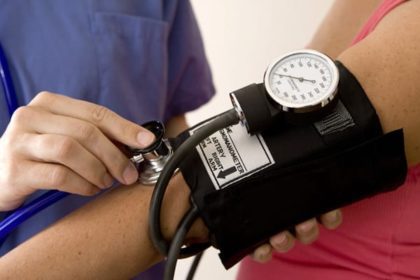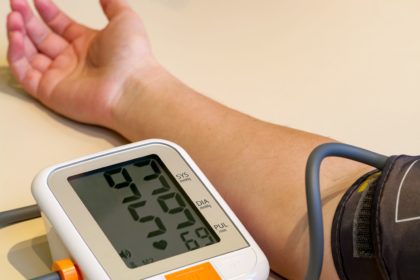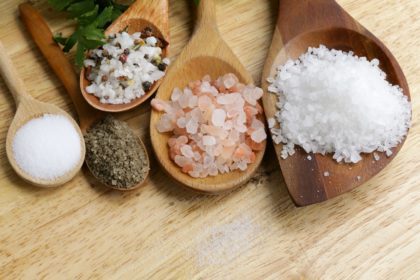
UPDATE: “Low Sodium”, “Salt-Free”, “Reduced Sodium”, “Unsalted”. Living a healthy life today means you don’t shake or utter that four-letter word… SALT. You’ve banished it from your favorite recipes, family table and your heart-healthy pantry. But the dietary approach to managing your blood pressure involves another key mineral — not just salt.
Low levels of potassium in your diet may be just as much of a risk factor for high blood pressure as high levels of sodium. Aim for a balance of less salt and more potassium in your daily eating plan. Here’s why…
Potassium helps to:
- Relax your blood vessel walls¹ (contributing to more flexible arteries)
- Lower your blood pressure (by helping you excrete excess sodium through your urine)
- Reduce damage to your arteries (from the decrease in pressure)
Not only do studies suggest a link between low potassium levels and high blood pressure² but to higher glucose/insulin levels as well. See VIDEO: Potassium and Type 2 Diabetes
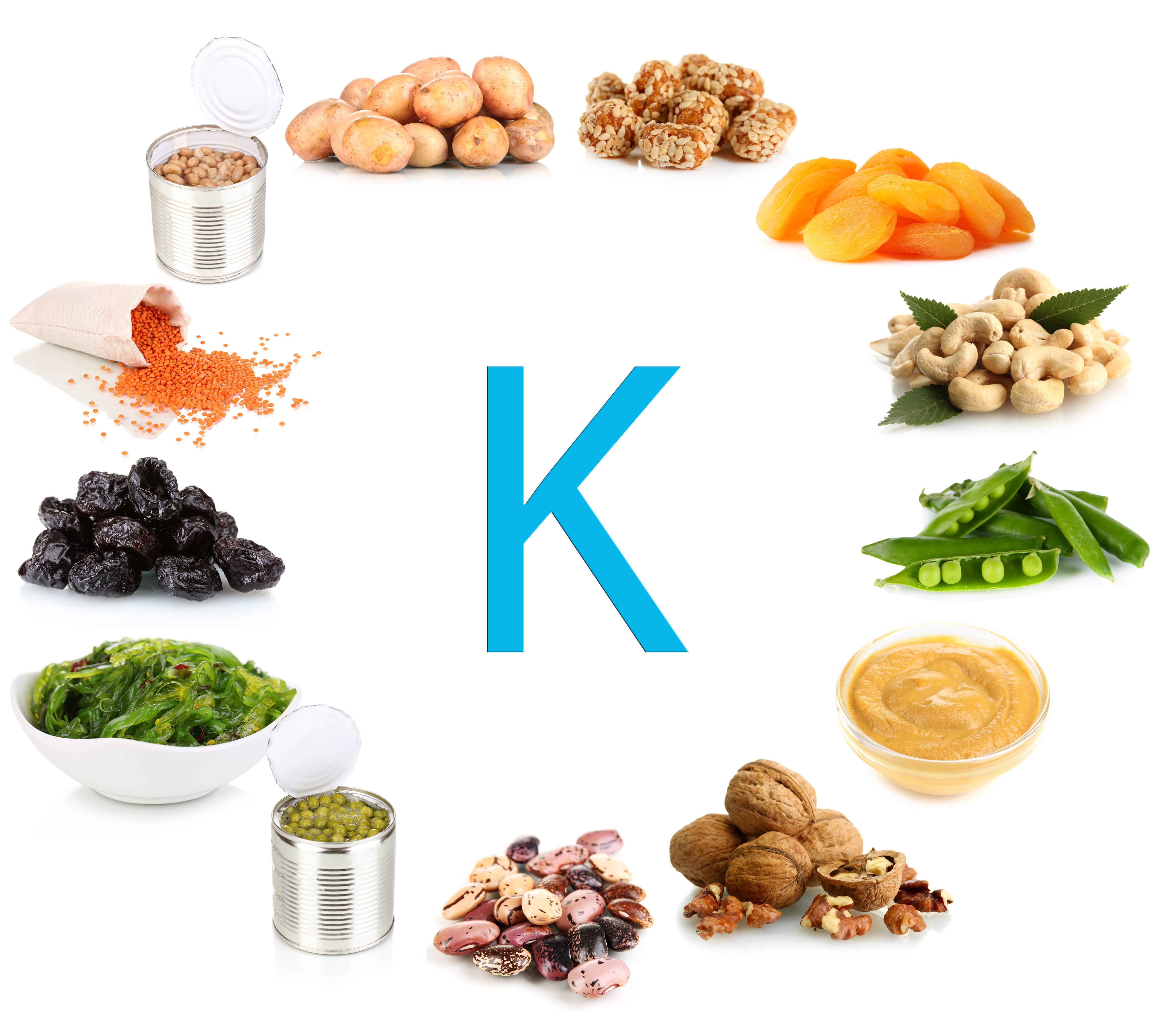
Not Just Bananas
Eat more potassium-rich foods, such as a wide variety of fruits, vegetables, and legumes — not just bananas. Many people think of bananas when they think of foods high in potassium, but they are actually near the bottom of the list of high potassium foods (over 400 mg. potassium per serving):
- Winter squash, cubed, 1 cup – 896 mg
- Sweet potato, baked with skin, 694 mg
- Beet greens, cooked, 1/2 cup – 655 mg
- Salmon, cooked, 6 oz – 618 mg
- Potato, baked with skin, 1 medium – 610 mg
- White beans, canned, drained, 1/2 cup – 595 mg
- Yogurt, nonfat, 1 cup – 579 mg
- Clams, canned, 3 oz – 534 mg
- Prune juice, 3/4 cup – 530 mg
- Carrot juice, 3/4 cup – 517 mg
- Halibut, cooked, 3 oz – 490 mg
- 100% orange juice, 8 oz – 496 mg
- Soybeans (edamame), green, cooked, 1/2 cup – 485 mg
- Tuna, yellowfin, cooked, 3 oz – 484 mg
- Lima beans, cooked, 1/2 cup = 484 mg
- Coconut water, plain, unsweetened, 8 oz – 470 mg
- Broccoli, cooked, 1 cup – 457 mg
- Rockfish, Pacific, cooked, 3 oz – 442 mg
- Cod, Pacific, cooked, 3 oz – 439 mg
- Cantaloupe, cubed, 1 cup – 431 mg
- Avocado, 1 medium – 485 mg
- Banana, 1 medium – 422 mg
- Spinach, cooked, 1/2 cup – 419 mg
- Tomato juice, 3/14 cup – 417 mg
- Tomato sauce, 1/2 cup – 405 mg
- Pinto beans, cooked, 1/2 cup – 400 mg
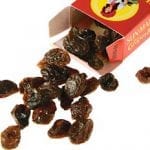 Some people think that raisins are super high in potassium because one cup contains a whopping 1236 mg — not to mention nearly 500 calories. However, a normal serving size of raisins is 1/4 cup (1 oz or a small snack-size box) which contains 322 mg of potassium.
Some people think that raisins are super high in potassium because one cup contains a whopping 1236 mg — not to mention nearly 500 calories. However, a normal serving size of raisins is 1/4 cup (1 oz or a small snack-size box) which contains 322 mg of potassium.
How Much Potassium Do You Need?
Aim to get in 4,700 mg of potassium per day. Boiling depletes potassium. For example, a BOILED potato has almost half the potassium of a BAKED potato. To preserve potassium, eat fruits and vegetables raw or lightly steamed.
NOTE: Studies show dietary supplementation ofpotassiumcan lower blood pressure in normal and some hypertensive patients, but these effects are slower to appear (about four weeks) compared to restricting salt.³
Medications/Conditions that May Affect Potassium Levels
Most people shouldn’t have any problems from eating a high-potassium diet. If you have kidney failure or other kidney problems, check with your doctor as to how much potassium you should consume per day.

Some blood pressure-lowering medications can increase potassium levels and require periodic testing (blood/urine). These include:
- Beta-blockers (e.g., carvedilol, metoprolol, atenolol)
- ACE inhibitors (e.g., lisinopril, benazepril)
- ARBs or angiotensin II receptor blockers (e.g., valsartan, losartan, Benicar)
Laxatives, steroids and thiazide diuretics (e.g., hydrocholorthiazide) can decrease potassium levels. If you’re taking a corticosteroid, such as prednisone, for osteoarthritis, you will tend to lose potassium and retain excess sodium. To offset this, eat fruits and vegetables high in potassium and cut back on bread, processed foods, and restaurant food which are some of the highest sources of daily sodium.
![]() Karen’s Fit Tip: Eat a balanced diet consisting of fresh fruits and vegetables. By doing so, you’ll also get a healthy dose of fiber and heart-healthy nutrients. Avoid relying on potassium supplements as they can more easily result in an excessive intake of potassium. For this reason, also limit the use of salt substitutes (which contain potassium chloride) and use savory antioxidant-rich herbs instead.
Karen’s Fit Tip: Eat a balanced diet consisting of fresh fruits and vegetables. By doing so, you’ll also get a healthy dose of fiber and heart-healthy nutrients. Avoid relying on potassium supplements as they can more easily result in an excessive intake of potassium. For this reason, also limit the use of salt substitutes (which contain potassium chloride) and use savory antioxidant-rich herbs instead.
Sources:
¹Potassium potently relaxes small rat skeletal muscle arteries. Medicine and Science in Sports and Exercise. 2003.
²Low Potassium Linked to High Blood Pressure. Dallas Heart Study; 3,300 subjects, half of whom were African American. American Society of Nephrology. 2008.
³Role of potassium in regulating blood flow and blood pressure. American Journal of Physiology. Regulatory, integrative and comparative physiology. 2006.


